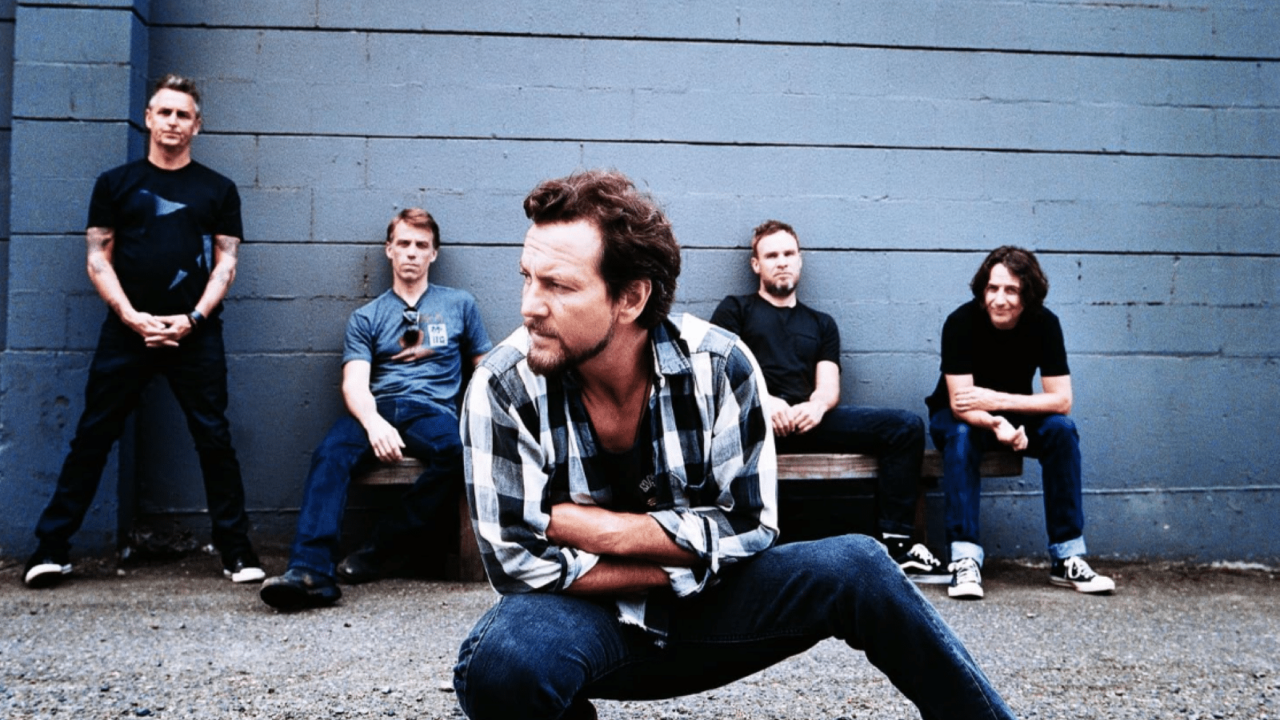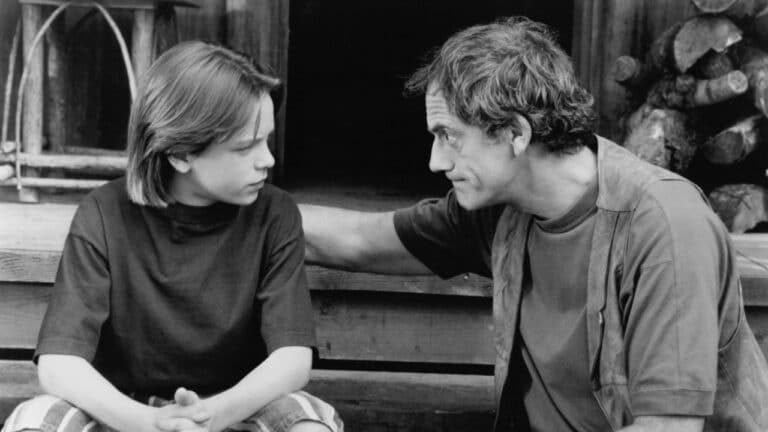24 Pearl Jam Deep Cuts Every True Fan Should Know

The ’90s started with a triumphant series of events: Germany reunified after David Hasselhof toppled the Berlin Wall — albeit with the assistance of Ronald Reagan and others. However, another historical moment came on the West Coast of America when Epic Records signed a young Seattle band named Pearl Jam.
Featuring an enigmatic, gifted vocalist from California named Eddie Vedder, the band became instant rock icons alongside Seattle grunge scene Godfathers Nirvana. Sony Records puts the band’s worldwide record sales at 85 million, cementing Pearl Jam as one of America’s biggest heritage acts.
Of course, the band’s many singles won them millions of fans over its four-decade career; however, treasures are scattered throughout the early albums and some of the later ones. This list features hidden pearls for whenever you are in a jam — songs selected by a huge fan.
1. “Why Go Home?” (1991)

Sitting in between arguably Pearl Jam’s two greatest singles, “Black” and “Alive” on the band’s debut smash hit album Ten, “Why Go Home?” stands up well to both. The song’s origins lie in a story Vedder read about a girl sectioned by her parents for using cannabis.
The song’s rapturous energy and brooding fury in Vedder’s lyrics encapsulate the injustice the singer felt at the young girl’s plight. The theme of ignored or abused youngsters would become central to Vedder’s lyrical focus over his career.
2. “Release” (1991)

The dream-infused slow waltz “Release” awaits those diligent listeners who make the end of Ten. The song starts slowly, building up to a dynamic peak, with Eddie Vedder’s valve-amp voice warmed up to haunting effect. “Oh, dear dad. Can you see me now? I am myself; like you somehow,” sings Vedder, alluding to his rocky relationship with his stepfather.
He had always believed his stepfather was his biological dad. Sadly, his bio dad passed away. Vedder sings to his soul in this powerful album-closer.
Stay the course for another reward: a hidden instrumental track.
3. “Leash” (1993)

The Vs. song has a rambunctious opening, with Vedder screaming in his trademark graveled singing voice like a Gen-X preacher. “Troubled souls unite, we got ourselves tonight,” he chants. “I am fuel, you are friends, we ‘got the means to make amends.”
He is a singer at the peak of his powers reaching out to all the forgotten souls in a proud, affluent country. Vedder has a rare rousing quality — he would have made a dangerous yet effective cult leader.
4. “Indifference” (1993)

What’s most striking about the Pearl Jam masterpiece is its resemblance to Neil Young and Crazy Horse. Sadly, laid-back ballads rarely become singles. It doesn’t mean they aren’t great songs; they just won’t fill the rock club dancefloor.
“Indifference” typifies the less-is-more ethos and features a stripped-back Hammond organ and warm guitars alongside Jeff Ament’s distinctive acoustic-electric bass. Songs like this show the band at its most charming.
5. “Nothingman” (1993)

There is a technicality with the stadium-shaking “Nothingman,” a song from the third album Vitalogy that induces compulsive singing wherever it is played. Strangely, the track was only released in Canada. Therefore, it remains a deep-cut song in America and beyond and one of Pearl Jam’s flagship anthems.
“She once believed in any story he had to tell; one day she stiffened, took the other side,” sings Vedder, preaching about loving someone wholeheartedly lest you end up with less than nothing.
6. “Rearviewmirror” (1993)

This well-known, totally lovable song was played on Saturday Night Live in 1994, and while it appeared as a live version of a “Dissident” B-side, it was never a single. It didn’t need to be. Years later, fans were still waxing lyrical about the song’s urgent brilliance, and Shawn Christ ranked the song 22nd in Paste’s 50 Best Ever Grunge Songs.
A 2004 Adam Sweeting review in The Guardian observes that Rearviewmirror set Pearl Jam apart from their Seattle peers. “They were simply a different kind of band from Cobain’s mob,” wrote Sweeting, understanding how vague the “grunge” label had become.
7. “W.M.A.” (1993)

The story behind “W.M.A.” (which stands for white male adult) follows Vedder after he slept at the recording studio and was waiting outside. Standing beside him was a respectable-looking black gentleman who passing police officers targeted for no reason. “It had been a couple of days since I had a shower,” says Vedder in Pearl Jam – The Illustrated Story, A Melody Maker Book.
“So here they come, they’re heading straight for us. And they just ignored me and [started] hassling him.” His vexation is clear in this protest song. The opening line says it all: “Trained like dogs, color and smell; walk by me to get to him.”
8. “Out of My Mind” (1994)

During an Atlanta show encore, the band finished its sing-along-friendly “Elderly Woman Behind the Counter in a Small Town” before breaking into a jam that had likely emerged in a rehearsal. The result was the upbeat, tub-thumping “Out of My Mind,” which ended up on the “Not for You” B-side.
Rolling Stone magazine revered this song when it appeared on the “Insanely Great Pearl Jam Songs Only Hardcore Fans Know” list. Well, here it is again — and what a song it is.
9. “Last Exit” (1994)

Pearl Jam inadvertently became the biggest grunge band in America in 1994, following Kurt Cobain’s tragic death the same year. The result was an album that espoused a more punk-rock, bare-bones ethos. The album for diehard fans only was Vitalogy.
Some critics panned the album, but its list of singles is nevertheless impressive. “Last Exit” opens the tracklist, a front-beat-heavy, old-fashioned rock song with a warm Marshall guitar crunch. While Vitalogy isn’t every fan’s favorite, it is an essential piece of Pearl Jam canon.
10. “Whipping” (1994)

Following opener “Last Exit,” the tracks on Vitalogy descend into hit single territory with “Spin the Black Circle” and “Not for You.” However, the urgency of “Whipping” comes as a welcome release and arguably stands up against its predecessors.
Lyrics like “Don’t mean to push, but I’m being shoved” and “Oh, I’m just like you, think we’ve had enough” speak about the band’s pro-choice stance. Eddie Vedder scrawled the words “Pro-Choice” on his arm during the 1992 MTV: Unplugged performance.
11. “Satan’s Bed” (1994)

Sitting far down the Vitalogy track listings is another front beat-inspired song gazing with satirical intent at the emergence of celebrity culture. “Who made, who made up, made up the myth: that we were born to be covered in bliss?” sings Vedder. “Never shook Satan’s hand; look see for yourself.”
There could be a hidden reference to a famous Bill Hicks skit about celebrities selling out to commercial interests. Hicks was a highly influential part of the comedy zeitgeist in the early ’90s. Other bands, such as Tool, reference his anarchic comedy style.
12. “Sometimes” (1996)

No Code was released two years after the band’s surprisingly low-fi previous album. Gone was the Seattle grunge band, replaced by a more weary, heritage rock act, a la Neil Young and Crazy Horse.
“Sometimes” was an interesting opening for a band prided on high-energy introductions; however, the song’s restrained nature makes it a perfect springboard for the subsequent crowd-pleaser “Hail, Hail.” No Code was not every fan’s favorite album, though it was a welcome respite from the anti-commercial ethos of Vitalogy.
13. “Smile” (1996)

“Smile” is a solid Pearl Jam number, sitting mid-table on No Code‘s playlist. The song’s masterful production saves an otherwise modest track; the seamless changeover from verse to chorus is the song’s saving grace.
Of course, this arrangement benefits from Vedder’s piercing voice singing, “Don’t it make you smile?” However, by now, the band had lost the early-nineties scruffy grunge appearance and was growing as an act.
14. “Present Tense” (1996)

“You can spend your time alone redigesting past regrets,” reflects an incandescent Vedder. “Makes much more sense to live in the present tense.” The song is simple, stripped-back Pearl Jam at its cathartic best.
“Present Tense” is a testament to moving forward and forgiving ourselves of past indiscretions. The bare, phase-driven warmth of the guitars complements Vedder’s soulful voice perfectly, leading to an empowering catharsis.
15. “Around the Bend” (1996)

“Around the Bend” could be channeling Van Morrison or Tim Buckley with its casual rhythm, lazy piano, and snare brush tone. However, it is just Pearl Jam doing its usual chill-out section that is unique to each album.
Vedder closes No Code with a lullaby that is thought to be for new drummer Jack Irons’ son. “I hold your head deep in my arms. My fingertips, they close your eyes,” go the heartfelt lyrics. “Off you dream, my little child. There’s a sun around the bend.”
16. “Brain of J.” (1998)

Pearl Jam’s fifth album, Yield, may be one of the most underrated — I would even put it a close second to Ten. “One-two-three-four; one-two-three-four,” chants a mystery band member, prompting a miscued guitar riff.
Then, the song launches into a loud 4:4 rock anthem, and surprisingly, not a single. “Brain of J” got the band off to a flying start on an album Rolling Stone’s Rob Sheffield considered a highly grown-up album.
17. “No Way” (1998)

“Here’s a token of my openness. Of my need to not disappear,” is the first line in Yield’s fourth song, personifying Vedder’s frankness that typifies his approach on an underrated album.
However, such was the collective nature of Yield’s recording process that guitarist Stone Gossard penned the words to “No Way.” While the song isn’t especially vibrant, it has a dark, dystopian Depeche Mode feel.
18. “All Those Yesterdays” (1998)

“All Those Yesterdays” sits at the end of Yield (and, like several of the band’s closing songs, contains a hidden track). “All Those Yesterdays” could perhaps be a late-era (albeit heavier) Beatles song with Paul McCartney on vocals.
Like many others, the song reaches a powerful, surging crescendo after an epic climb. It is peppered with rhetoric about losing one’s reason to live, realizing time is fast disappearing, and looking back on “All those paper plates.” However, this comes before a rallying, cathartic cry: “You’ve got time to escape.”
19. “Untitled” (1998)

The beautiful “Untitled” is a live recording of a concert at Merriweather Post Pavilion in Maryland. Though written in 1998, the song made it onto 2011’s Live: On Two Legs, Pearl Jam’s beloved live album.
Okay, the song is only two minutes long, but that’s all it takes to be spellbound by its austere vocal and fingerpicked, clean guitar soundscape. The band is almost telepathic as a music unit in full swing, which drives this stirring number.
20. “M.F.C.” (1998)

“M.F.C.” is best heard on Live: On Two Legs, though the studio version will suffice. The greatest thing about this song is harmony swimming through the chorus, adding that essence of a band we have loved for so long.
The song’s no-nonsense, short-running time is the perfect blend for a song that, surprisingly, never made a single. However, it had stiff competition in the Yield tracklist, which stands out as a surprisingly complete album.
21. “Breakerfall” (2000)

Binaural was the band’s sixth album, the first with former Soundgarden stickman Matt Cameron. Surprisingly, the opening number, “Breakerfall,” wasn’t released as a single, though it became a fan favorite like most Pearl Jam lead tracks.
The song’s intro could be from the early ’70s with its Steppenwolf-esque opening guitar and bass combination; it then moves into familiar 4:4 rock territory — a space the band knows well.
22. “Thumbing My Way” (2002)

The band had a harrowing start to the millennium. Following a horrifying episode at the band’s 2000 Roskilde appearance in which nine fans died, the band recorded the album in the wake of the 9/11 terrorist attack.
It is easy to understand why 2002’s Riot Act gave us “Thumbing My Way,” a regretful, solemn ballad with the lyrics such as, “I let go of the rope thinking that’s what held me back; and in time I’ve realized it’s now wrapped around my neck.”
23. “Big Wave” (2006)

Pearl Jam’s frontman is partial to surfing and is rumored to own properties in Hawaii for this reason. In the past, he has surfed with professional legend Kelly Slater, revealing his big-wave passion in an otherwise reclusive life.
In “Big Wave,” Vedder invites listeners to share his love for the sea; the song’s syncopated energy is enough to rouse any longboard shredder for their morning paddle — in some surfers’ dreams, they will catch a wave with Vedder himself.
24. “Brother” (2009)

Pearl Jam reissued the hit album Ten in 2009, this time with several bonus tracks, including “Brother,” a formerly instrumental track from the 2003 compilation album Lost Dogs. The song almost caused bassist Jeff Ament to leave the band after a disagreement with guitarist Stone Gossard.
After a rethink, a lyric-inclusive version made its way onto the tracklist, delivering a much better song overall. The production is big, bold, and heavier than usual for a Pearl Jam song, which is why fans love it so much.





